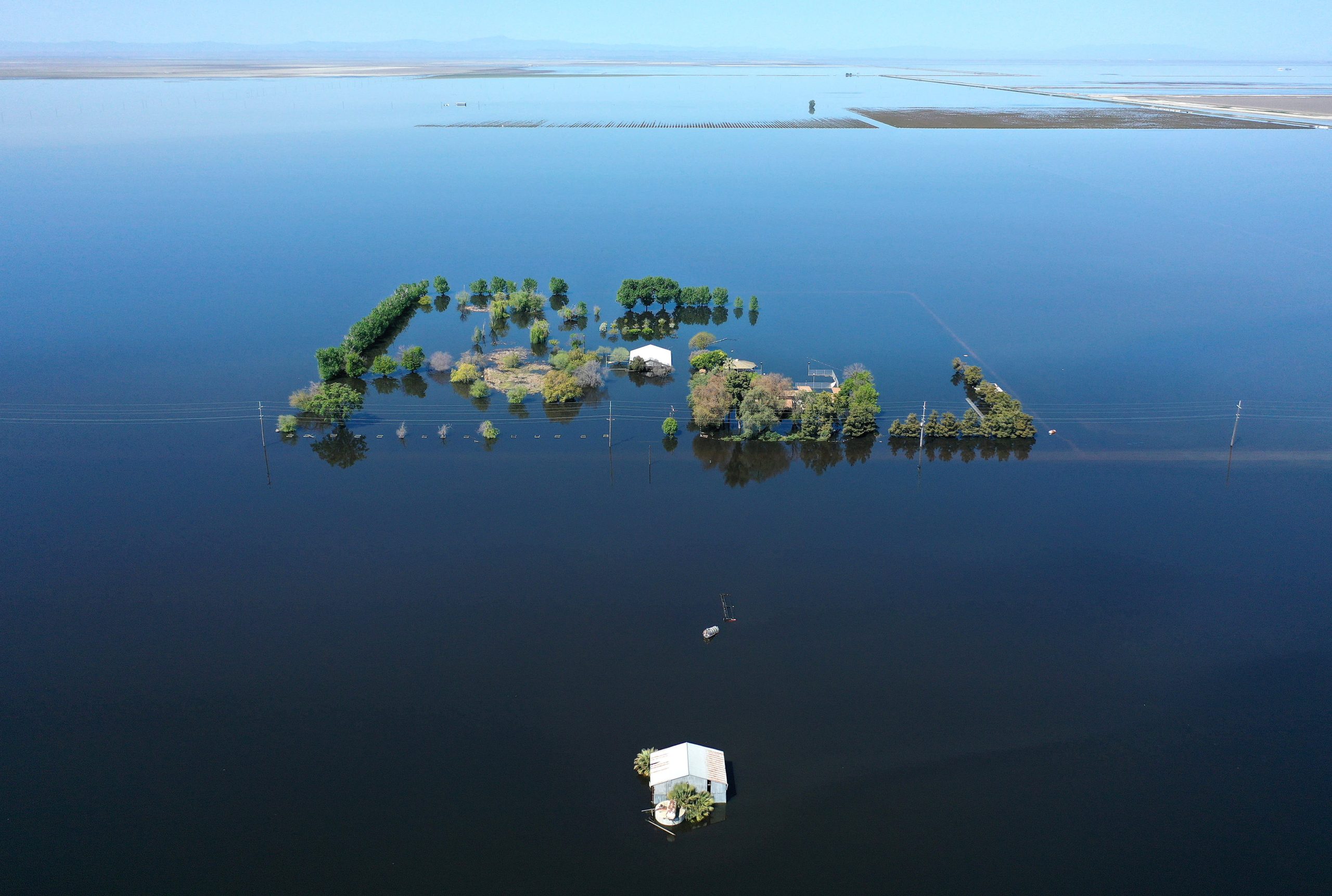Table of Contents
ToggleThe Rebirth of Tulare Lake: A Ghostly Phenomenon
Tulare Lake, once drained and transformed into farmland, has made a haunting return following epic winter storms and abundant Sierra Nevada runoff. This vast expanse of water submerged thousands of acres of productive agricultural land, creating an awe-inspiring sight. However, the lake’s resurgence raises questions about its contents and the mysteries lying beneath its surface.
Wildlife Flourishes Amidst the Murky Waters
With the return of Tulare Lake, a flourishing ecosystem has emerged, drawing ducks, egrets, and other waterfowl to its shores. Frogs and tule grass have also made a comeback, reviving long-forgotten ecosystems. The presence of these vibrant species showcases nature’s ability to adapt and thrive in unexpected circumstances.
Patrolling the Reborn Lake: Kings County Sheriff’s Office
As Tulare Lake reclaimed its historic footprint, law enforcement agencies like the Kings County Sheriff’s Office found themselves facing new challenges. The sheriff’s office acquired an airboat to navigate the lake’s waters, which teemed with debris and potential hazards. This specialized vessel has enabled deputies to carry out their duties effectively, ensuring public safety amidst the lake’s unique conditions.
Concerns and Risks: Contaminants and Unknowns
While the rebirth of Tulare Lake has captivated many, concerns about contaminants and toxins have surfaced. The floodwaters engulfed storage sheds containing chemicals, manure piles, and agricultural machinery, posing potential risks. Authorities have advised against consuming fish from the lake due to the unknown extent of contamination. The full scope of pollutants and their impact on the ecosystem remains uncertain, making it imperative to exercise caution in and around the lake.
Shrinking Waters: Receding and Reemerging
Tulare Lake, once spanning 120,000 acres, has gradually receded to approximately 61,000 acres. The lake’s depth, which peaked between 5 and 7 feet, has begun to subside. Efforts by state water officials to divert excess water and prevent further flooding have proven successful. As the waters recede, remnants of the agricultural life halted by the lake’s resurgence are slowly resurfacing, revealing the extent of the damage caused by the inundation.
Resilience Amidst Hardship: Impact on the Community
Tulare Lake’s resurgence has brought both wonder and hardship to the San Joaquin Valley community. The flooding disrupted the lives of residents, who lost rental homes and belongings. The decaying infrastructure and the stench of manure serve as reminders of the challenges faced. Nevertheless, the community remains resilient, and steadfast in its commitment to the region and its unique seasonal rhythms.
Coexistence with Tulare Lake: Navigating a New Reality
As Tulare Lake continues to transform the landscape, residents and authorities alike must adapt to a new reality. Learning to live with the lake involves understanding its risks, respecting private property boundaries, and heeding official warnings. By embracing this changed environment, the community can find ways to coexist and navigate the challenges posed by the enigmatic Tulare Lake.
Conclusion
In conclusion, the resurgence of Tulare Lake has sparked intrigue and raised important questions about its contents and impact on the surrounding ecosystem. While the reborn lake has provided a haven for wildlife, concerns about contaminants and risks persist. By understanding the complexities of this revitalized landscape and fostering resilience, the community can forge a path towards harmonious coexistence with Tulare Lake.








1 thought on “Exploring the Mysteries of Tulare Lake: Contaminants, Toxins, and the Resurgence of Wildlife”
Pingback: How Avian Botulism Threatens California's Resurgent Tulare Lake - Sustainability Awakening